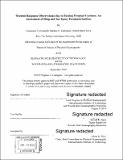| dc.contributor.advisor | Steven R. Jayne. | en_US |
| dc.contributor.author | Gallagher, Stephan D.,Lieutenant Commander(Stephan Dominic) | en_US |
| dc.contributor.other | Joint Program in Physical Oceanography. | en_US |
| dc.contributor.other | Massachusetts Institute of Technology. Department of Earth, Atmospheric, and Planetary Sciences. | en_US |
| dc.contributor.other | Woods Hole Oceanographic Institution. | en_US |
| dc.date.accessioned | 2020-02-10T21:40:28Z | |
| dc.date.available | 2020-02-10T21:40:28Z | |
| dc.date.copyright | 2019 | en_US |
| dc.date.issued | 2016 | en_US |
| dc.identifier.uri | https://hdl.handle.net/1721.1/123741 | |
| dc.description | Thesis: S.M., Joint Program in Physical Oceanography (Massachusetts Institute of Technology, Department of Earth, Atmospheric, and Planetary Sciences; and the Woods Hole Oceanographic Institution), 2016 | en_US |
| dc.description | Cataloged from PDF version of thesis. | en_US |
| dc.description | Includes bibliographical references (pages 119-123). | en_US |
| dc.description.abstract | Most traditional theories regarding upper oceanic response due to passing tropical cyclones involve an initial and predominant upwelling based on storms' strong cyclonic flow and resulting positive wind stress curl imparted on the sea surface. In August 2015, Air-Launched Autonomous Micro Observer float 9077 was intercepted by Hurricane Ignacio and its temperature measurements revealed a 40 m depression of the 26°C isotherm ahead of the device's closest point of approach with the storm and usual upwelling response. This unique finding motivated attempting to replicate the apparent downwelling ahead of Hurricane Ignacio and three others-Irma, Florence and Michael, using the Price-Weller-Pinkel 1/2 order closure model, via comparisons of the depth of the 26°C isotherm, tropical cyclone heat potential and vertical velocity. When modeling the total stress, two other traditional ideas were challenged. | en_US |
| dc.description.abstract | First, many legacy drag coefficients linearly increase with wind speed, while the modem variety maximize near tropical cyclone strength, with varying asymptotic and/or decreasing end behavior. Second, it is believed that sea spray droplets are sheared off the largest wave crests, quickly accelerate in the high winds, but upon reentry, dampen the smaller waves and flux substantial amounts of momentum to the sea. Taken together, many traditional atmosphere-ocean models bulk parameterize air-sea interaction processes and employ a legacy drag coefficient and omit or crudely formulate sea spray. Therefore, this study aimed to simulate the aforementioned downwelling using 14 total forcing parameterizations, including seven different legacy or modem drag coefficients, with and without spray stress. | en_US |
| dc.description.abstract | A combination of qualitative and statistical analyses illustrated downwelling was present in Hurricane Ignacio and every other storm by a large majority of variable indices, legacy drag coefficients were statistically significantly over-estimating outliers and should not be employed in tropical cyclone models, and while the explicit addition of sea spray to interfacial stress reduced model accuracy, this phenomenon remains paramount through modem drag coefficient selection. The confirmation of downwelling is physically founded in Ekman dynamics and may be significant in storm surge enhancement due to the accompanying surface height anomaly and near-shore depth limitations forcing water, with a negative vertical velocity, ashore. | en_US |
| dc.description.sponsorship | Office of Naval ResearchN00014-15-12293 | en_US |
| dc.description.sponsorship | Office of Naval ResearcN00014-18-12819 | en_US |
| dc.description.sponsorship | U. S. Navy Civilian Institution Program | en_US |
| dc.description.statementofresponsibility | by Stephan D. Gallagher. | en_US |
| dc.format.extent | 123 pages | en_US |
| dc.language.iso | eng | en_US |
| dc.publisher | Massachusetts Institute of Technology | en_US |
| dc.rights | MIT theses are protected by copyright. They may be viewed, downloaded, or printed from this source but further reproduction or distribution in any format is prohibited without written permission. | en_US |
| dc.rights.uri | http://dspace.mit.edu/handle/1721.1/7582 | en_US |
| dc.subject | Joint Program in Physical Oceanography. | en_US |
| dc.subject | Earth, Atmospheric, and Planetary Sciences. | en_US |
| dc.subject | Woods Hole Oceanographic Institution. | en_US |
| dc.subject.lcsh | Cyclones. | en_US |
| dc.subject.lcsh | Ocean. | en_US |
| dc.subject.lcsh | Temperature. | en_US |
| dc.title | Oceanic response observations due to passing tropical cyclones : an assessment of drag and sea spray parameterizations | en_US |
| dc.type | Thesis | en_US |
| dc.description.degree | S.M. | en_US |
| dc.contributor.department | Joint Program in Physical Oceanography | en_US |
| dc.contributor.department | Massachusetts Institute of Technology. Department of Earth, Atmospheric, and Planetary Sciences | en_US |
| dc.contributor.department | Woods Hole Oceanographic Institution | en_US |
| dc.identifier.oclc | 1138891019 | en_US |
| dc.description.collection | S.M. Joint Program in Physical Oceanography (Massachusetts Institute of Technology, Department of Earth, Atmospheric, and Planetary Sciences; and the Woods Hole Oceanographic Institution) | en_US |
| dspace.imported | 2020-02-10T21:40:27Z | en_US |
| mit.thesis.degree | Master | en_US |
| mit.thesis.department | EAPS | en_US |
